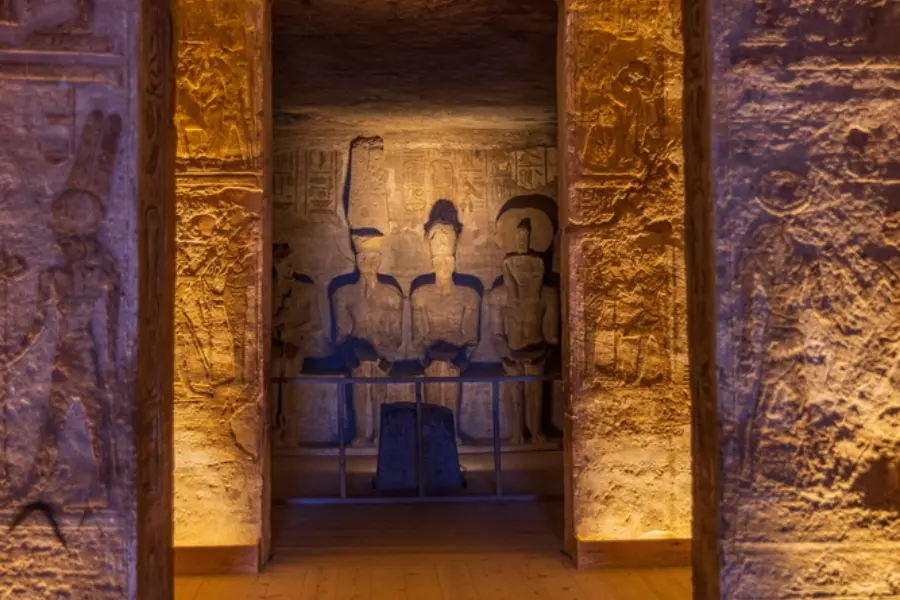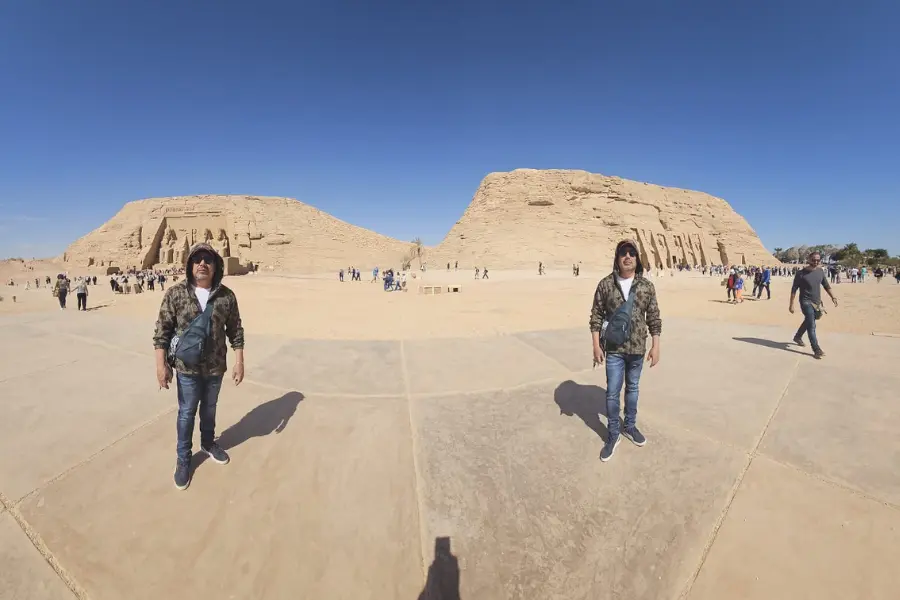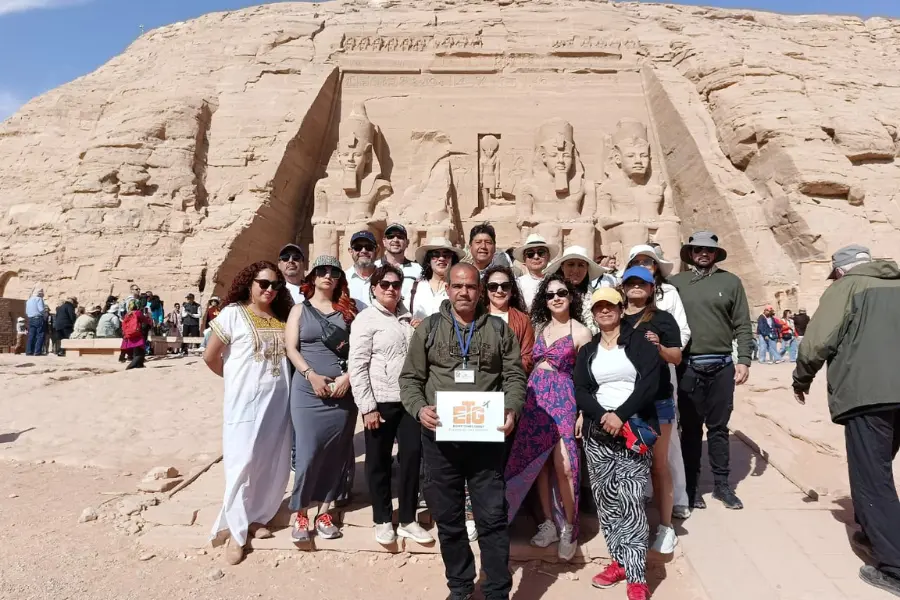Elephantine Island Egypt – History, Highlights & Tours
📅Published: April 30, 2025
✏️Updated: 27 August, 2025
⏱️~6 min read
Elephantine Island is one of Aswan’s most iconic Nile islands and a place where ancient Egyptian history blends seamlessly with modern Nubian life. Located at the First Cataract, the island once served as a key gateway between Africa and Egypt, shaping trade, religion, and daily life for thousands of years. Today, visitors can explore the remains of the temples of Khnum and Satet, admire the beautifully designed Nileometer, and wander through the engaging Aswan Museum. For anyone touring Aswan City, this island is easily one of the most meaningful and rewarding stops.
Contents
ToggleWhere is Elephantine Island located?
Sitting gracefully in the Nile opposite Aswan’s east-bank Corniche, Elephantine Island in Egypt is a captivating blend of ancient temples, palm-filled landscapes, and authentic Nubian life. Covering roughly 1.5 km by 0.5 km, the island combines archaeological treasures with peaceful walking paths and traditional homes just north of the colorful Nubian Village. From this central location, you are only minutes away by boat from Kitchener’s Botanical Garden and scenic felucca routes through the First Cataract—making Elephantine Island a perfect starting point for exploring Aswan.

Visiting Elephantine Island (Quick Guide)
- Getting there: Reaching the island is simple—take a short public ferry or a peaceful felucca ride from the east bank Corniche. The island is entirely car-free, making it perfect for relaxed walking and exploration.
- Time needed: Plan around 1.5 to 3 hours to visit the Aswan Museum, explore the Nileometer, walk through the remains of the temples of Khnum and Satet, and enjoy a stroll through the Nubian neighborhoods.
- Best time: October to April offers the most pleasant weather. For comfortable temperatures and beautiful photography, arrive early in the morning or during golden hour.
- Tickets: Entry to the Aswan Museum and the Nileometer is usually ticketed separately. Check the latest prices at the gate, as they may change seasonally.
- Etiquette: You’re walking through an active Nubian community—dress modestly, be respectful, and always ask permission before photographing local residents.
The History of Elephantine Island
For thousands of years, Elephantine Island served as Egypt’s southern stronghold at the First Cataract, shaping trade, religion, and politics in Upper Egypt. During the Pharaonic era, the island thrived as a gateway to inner Africa, where ivory, gold, and rare goods were transported north. Its strategic location also made it a powerful religious hub, home to the ancient cults of Khnum, the ram-headed creator god who shaped life and governed the Nile’s flow, and Satet, the protective deity of the cataract and the divine embodiment of the annual flood.
Across different dynasties, the island witnessed continuous temple construction—starting with early shrines dedicated to Satet, expanding during the Middle Kingdom, and growing further with impressive New Kingdom additions. One of its most remarkable features, the Nileometer, was used for centuries to measure the Nile flood levels, which determined agricultural taxes and predicted harvest success. In the 5th century BCE, the island housed a significant military community whose daily life is recorded in the Elephantine Papyri, an invaluable archive that also documents a Jewish temple once standing here.
Construction and cultural activity continued under the Ptolemies and Romans, followed by Coptic and early Islamic phases that reshaped the settlement. Today, ongoing excavations and the collection at the Aswan (Elephantine) Museum preserve artifacts spanning from the Predynastic to the Roman eras—including mummified rams symbolizing Khnum, statues, pottery, and everyday tools—making Elephantine one of Upper Egypt’s most important open-air historical landscapes.

Elephantine Island Today
The southern end of the island holds the primary archaeological zone, while just to the north, winding alleys lead into the Nubian neighborhoods of Sio and Koti, where homes often extend upward with extra floors to maximize space. Shaded by palms, mango, and acacia trees, small agricultural plots of vegetables and legumes thrive under simple irrigation channels. Local schools serve the community, motorboats connect residents directly to the Aswan Corniche, and the iconic Mövenpick rises at the island’s northern tip.
Before or after exploring the historic sites, make time for the charming, locally curated Animalia Museum—a small but deeply insightful collection that showcases Nubian nature, wildlife, geology, and traditional daily life, offering the perfect cultural context for your Elephantine Island visit.

Top Things to See on Elephantine Island
- Nileometer: the classic flood gauge staircase used for tax and harvest forecasts.
- Khnum Temple remains: gateway columns and the ram cemetery recalling the creator god.
- Satet Temple sequence: multiple phases from early dynastic to Hatshepsut.
- Aswan (Elephantine) Museum: Predynastic–Roman artifacts, mummified rams, domestic tools.
- Nubian quarters (Sio & Koti): colorful doorways, crafts, and riverfront life.
- Felucca loop: gentle sails through boulder-strewn cataract channels at sunset.
Why Elephantine Mattered
Sitting at Egypt’s southern gateway, Elephantine Island served for millennia as a strategic checkpoint for trade caravans, government envoys, and military patrols—controlling the flow of goods, gold, and travelers arriving from Nubia and deeper Africa. Some researchers even connect its ancient name to its curved silhouette, said to resemble a ram’s horn or an elephant’s tusk. Across the Early Dynastic, Pharaonic, Ptolemaic, and Roman eras, rulers marked the island with temples, fortifications, and inscriptions that reinforced its importance.
Today, you can still trace this extraordinary history in the surviving gateways, temple foundations, and the iconic Nileometer, creating a uniquely compact landscape where commerce, worship, and Nile science shaped Egyptian life for thousands of years.

Elephantine vs Philae — What’s the Difference?
- Elephantine Island Egypt: lived-in Nile island with Khnum/Satet remains, the Nileometer, Aswan Museum, and Nubian life. Boat: public ferry/felucca from the Corniche.
- Philae (Agilkia Island): the majestic Temple of Isis complex relocated stone-by-stone; separate boat dock and ticket; more monumental feel.
- Tip: do both—Elephantine for archaeology + community; Philae for grand temple architecture and evening sound-and-light.
Plan Your Elephantine Island Visit
Suggested Mini-Itinerary
Ferry to the south landing → Nileometer → temple remains (Khnum/Satet) → Aswan Museum → wander the Nubian lanes for a fresh juice → optional felucca loop around Kitchener’s Island at sunset.
Pair with Nearby Experiences
- Aswan Day Tours (Philae, High Dam, Unfinished Obelisk).
- Nubian Village visit & cultural experience.
- Aswan Nubian Village Tour – traditional life & boat ride.
- Edfu & Kom Ombo Day Tour from Aswan – temples along the Nile.
- Aswan Day Trip – explore Philae Temple, High Dam & more.
- Felucca Ride in Aswan – sunset sailing around Elephantine & Kitchener’s Island.
FAQ – Elephantine Island
What is Elephantine Island famous for?
The Nile’s historic Nileometer, temples of Khnum and Satet, the Aswan Museum, and a living Nubian community in a unique cataract setting.
How do you get to Elephantine Island?
Take the public ferry or hire a felucca/motorboat from the Aswan east-bank Corniche; crossings are frequent and take only a few minutes.
How long do you need on the island?
Plan 1.5–3 hours for the essential sights; add more time if you’d like a felucca loop or a café stop by the river.
Is Elephantine the same as Philae?
No. Elephantine is a lived-in Nile island with mixed ruins and a museum; Philae is the grand Temple of Isis complex on a separate island with its own boat dock and ticket.
Conclusion
Blending archaeology with daily Nubian life, Elephantine Island Egypt makes Aswan feel intimate and timeless in the same breath. From the Nileometer to the temples of Khnum and Satet, the island of Elephantine distills thousands of years into a compact walk—easy to pair with felucca sailing, Philae, and more. Ready to explore? See our curated Aswan tours and build an itinerary that fits your pace.





